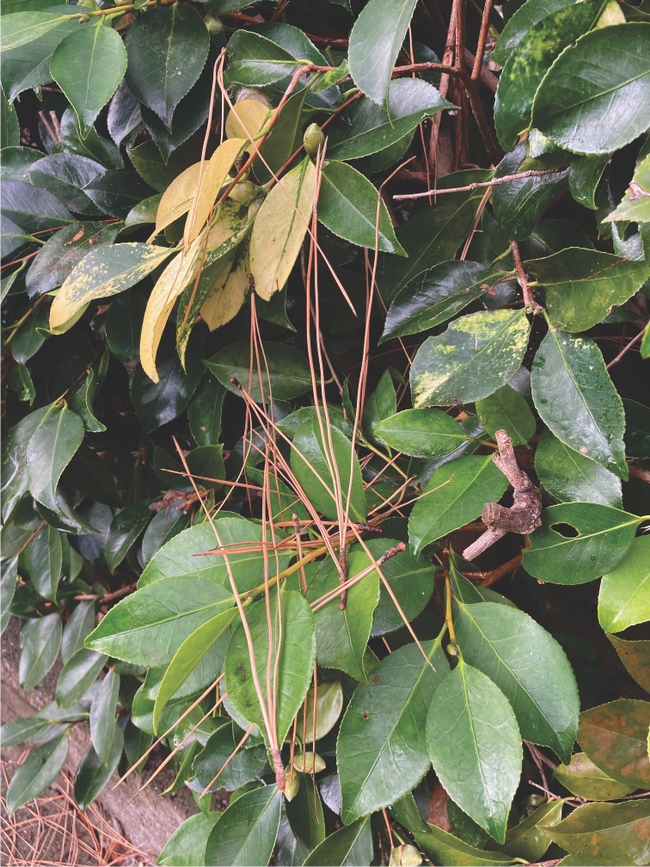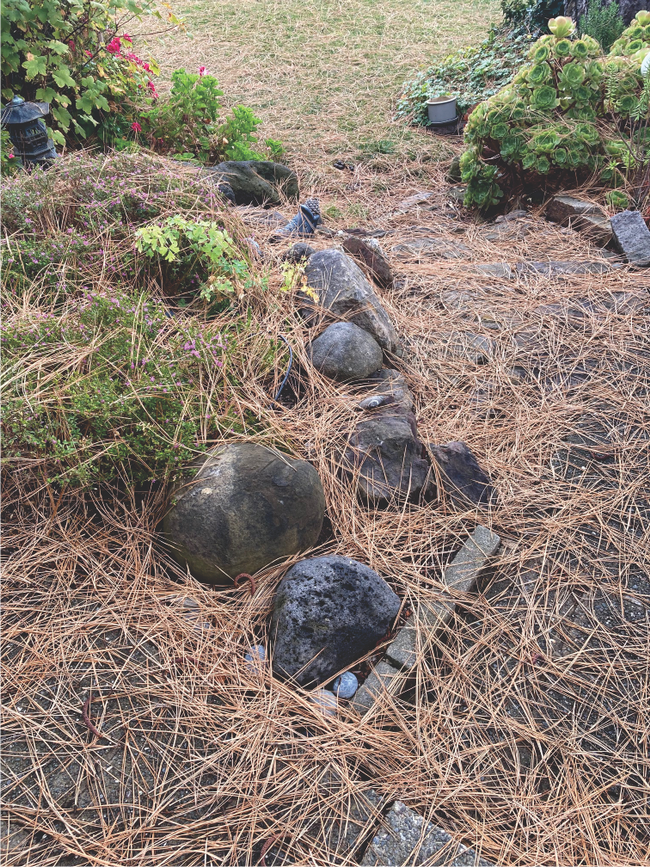A camellia bush decorated with ponderosa pine needles
A couple of days worth of needle fall from a ponderosa pine
Is there anything positive to share about this poor, huge tree? Ponderosa pines are handsome trees with their reddish-brown bark and invoke the western United States. They are drought resistant trees, fire-resistant (as long as there aren't thousands of dry needles on the ground), and provide habitat for wildlife. They also make great lumber. Master Gardeners are taught right plant, right place from the beginning of training class. Given the right place, that being a very large property or a forest, this plant is a beauty to behold.
Napa Master Gardeners are available to answer garden questions by email: mastergardeners@countyofnapa.org. or phone at 707-253-4143. Volunteers will get back to you after they research answers to your questions.
Visit our website: napamg.ucanr.edu to find answers to all of your horticultural questions.
Photos by Jane Callier

